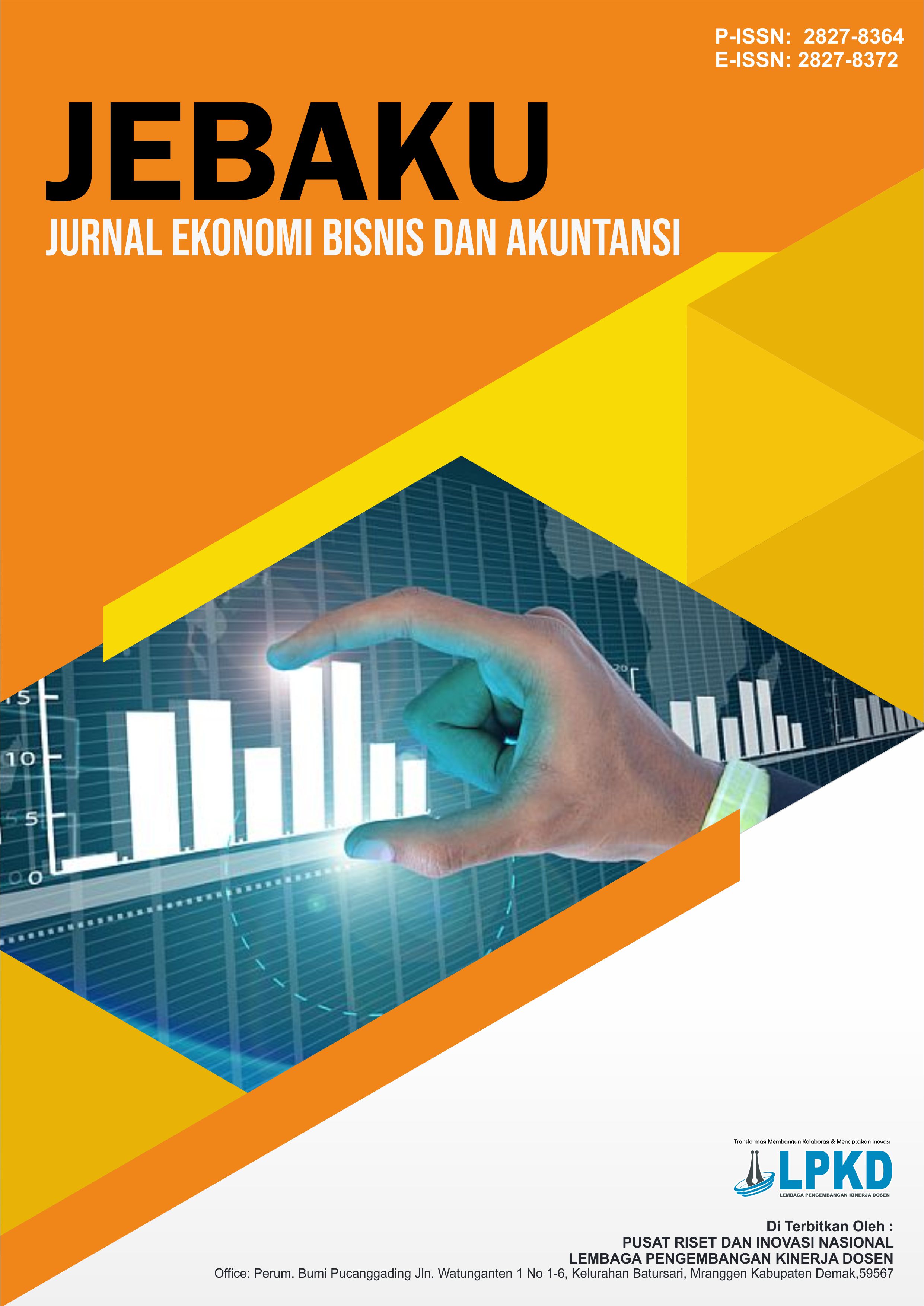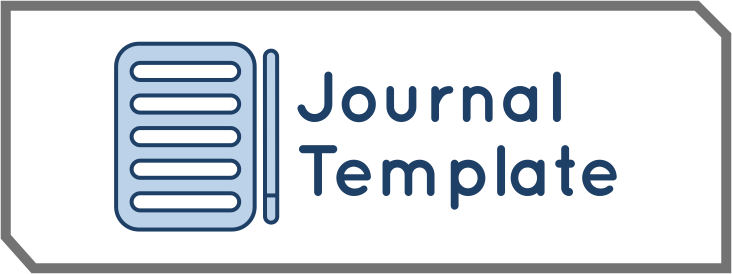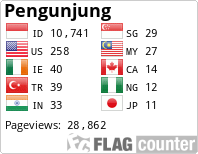Pengaruh Pariwisata Halal terhadap Pendapatan Daerah pada 10 Provinsi Destinasi Wisata Halal Indonesia
DOI:
https://doi.org/10.55606/jebaku.v5i1.5051Keywords:
Halal-Tourism, Regional-Revenue, Number-of-Tourist-DestinationsAbstract
Halal tourism is a specialized segment of the travel business that offers services that are in line with sharia or Islamic principles to meet the demand of Muslim tourists. With a large Muslim population and increasing demand for halal tourist locations around the world, halal tourism in Indonesia has great potential for economic growth. However, despite this potential, Indonesia still faces challenges in fully realizing its capacity in the halal tourism sector. Therefore, Indonesia is currently advancing the idea of halal tourism in ten provinces through the Ministry of Tourism and Creative Economy. The purpose of this study is to present data on how halal tourism affects regional income in 10 provinces of halal tourism locations in Indonesia. This study uses a quantitative methodology. With secondary data and panel data regression analysis, which combines data from 2017 to 2023 with provincial data covering 10 provinces in Indonesia that are developing halal tourism sourced from BPS, KEMENPAREKRAF, MINISTRY OF FINANCE, SIMREG, BAPPENAS, as well as the tourism office website in each region that is a Halal tourist destination. The findings of the study show that the Number of Muslim Tourism, the Number of Services and Facilities, and the Number of Tourist Destinations both partially and simultaneously, do not show a significant influence on regional income.
Downloads
References
Alyani, F., & Siwi, M. K. (2020). Pengaruh jumlah objek wisata dan jumlah hotel terhadap pendapatan asli daerah (PAD) di Kabupaten/Kota Provinsi Sumatera Barat. Jurnal Ecogen, 3(2), 212. https://doi.org/10.24036/jmpe.v3i2.8763
Azam, M. S. E., & Abdullah, M. A. (2020). Global halal industry: Realities and opportunities. International Journal of Islamic Business Ethics, 5(1), 47–59. https://doi.org/10.30659/ijibe.5.1.47-59
Azam, M. S. E., Abdullah, M. A., & Razak, D. A. (2019). Halal tourism: Definition, justification, and scopes towards sustainable development. International Journal of Business, Economics and Law, 18(3), 23–31.
Badan Pusat Statistik. (2024). BPS. https://www.bps.go.id
Bahardeen, F., & S. K. (2024). Global Muslim Travel Index (Issue May).
Hakim, M. F., & Sugianto, S. (2024). Studi library research: Penguatan ekosistem halal value chain di Indonesia untuk industri halal global. Jurnal Penelitian Inovatif (JUPIN), 4(4), 2227–2238. https://doi.org/10.54082/jupin.787
Hanafi Ahmad, A. (2022). Pengaruh jumlah kunjungan wisatawan, objek wisata, dan retribusi pariwisata terhadap pendapatan asli daerah. Jurnal Sosial Ekonomi Bisnis, 2(1), 50–61. https://doi.org/10.55587/jseb.v2i1.34
Haris, H., & Nashirudin, M. (2019). Lombok as an Indonesian halal travel destination. Shirkah: Journal of Economics and Business, 4(3). https://doi.org/10.22515/shirkah.v4i3.277
Iswanaji, C., Aziz, A., Rizki, M., Zulfkar, A. L., Romli, N. A., Saftri, D., Mahardika, S. G., Kurnia, R., Hasan, D. H., Nurhasanah, S., Nissa, I. K., Huda, M. W. S., Sugianto, S., Susanti, S., & Risya K, E. A. (2024). Perkembangan industri halal & penguatan lembaga keuangan syariah. CV. Adanu Abimata. https://books.google.co.id/books?hl=en&lr=&id=Eh0QEQAAQBAJ
Kawuwung, A. S., Kumenaung, A. G., & Tolosang, K. D. (2023). Analisis pengaruh jumlah wisatawan, jumlah objek wisata dan jumlah hotel terhadap perekonomian di Kota Tomohon. Berkala Ilmiah Efisiensi, 6(23), 1–12.
Nasution, A. H., Syafitri, D. A., & Ganda, D. W. (2022). Regulasi wisata halal (Analisis pro dan kontra penerapan wisata halal di Danau Toba). Altafani, 2(1), 158–170. https://doi.org/10.59342/jpkm.v2i1.82
Nurainina, F., & Asmara, K. (2022). Jumlah wisatawan, jumlah hotel, dan jumlah objek wisata terhadap pendapatan asli daerah Kabupaten Tuban. Jurnal Ekobistek, 11(3), 245–250. https://doi.org/10.35134/ekobistek.v11i3.364
Pitana, I. G. (2009). Pengantar ilmu pariwisata. Andi Publisher.
Rahmawati, S., Prahadipta, W. E., & Anggahegari, P. (2023). A review of halal tourism implementation in Indonesia towards a global perspective. Journal of Halal Science, Industry, and Business, 1(1), 1–14. https://doi.org/10.31098/jhasib.v1i1.1584
Sholehuddin, M. S., Munjin, M., & Adinugraha, H. H. (2021). Islamic tradition and religious culture in halal tourism: Empirical evidence from Indonesia. IBDA’: Jurnal Kajian Islam dan Budaya, 19(1), 79–100. https://doi.org/10.24090/ibda.v19i1.4470
Slamet, Abdullah, I., & Laila, N. Q. (2022). The contestation of the meaning of halal tourism. Heliyon, 8(3), e09098. https://doi.org/10.1016/j.heliyon.2022.e09098
Sugianto, S., Zuhra, S. A., & Alim, M. El. (2024). Kontribusi sektor pariwisata halal terhadap produk domestik bruto (PDB) dalam membangun perekonomian berkelanjutan. Mutawasith: Jurnal Hukum Islam, 7(2), 118–133. https://doi.org/10.47971/mjhi.v7i2.969
Tobing, M. (2021). Pengaruh jumlah obyek wisata, tingkat penghunian kamar, dan jumlah kunjungan wisatawan terhadap pendapatan asli daerah Kabupaten Simalungun. Jurnal Ekuilnomi, 3(2), 127–139. https://doi.org/10.36985/ekuilnomi.v3i2.263
Wahyuni, et al. (2023). Pengaruh faktor makroekonomi dan faktor spesifik bank. Jurnal Ekonomi dan Bisnis, 3(2), 216–224.
Wati, I. (2019). Pengaruh jumlah obyek wisata dan jumlah wisatawan terhadap pendapatan sektor pariwisata dalam perspektif ekonomi Islam. Jurnal Ekonomi Islam, 11(1).
Webster, S. I., & C. (2007). Measuring the impact of tourism on economic growth. Proceedings of GEOTOUR 2006 Conference, 21–30.
Yazid, F., Kamello, T., Nasution, Y., & Ikhsan, E. (2020). Strengthening sharia economy through halal industry development in Indonesia. Advances in Social Science, Education and Humanities Research, 413, 86–89. https://doi.org/10.2991/assehr.k.200306.187
Zuhriyah, D. A. (n.d.). Kemenparekraf kembangkan wisata halal di 10 destinasi pariwisata. Bisnis.com.
Downloads
Published
How to Cite
Issue
Section
License
Copyright (c) 2025 Jurnal Ekonomi Bisnis dan Akuntansi

This work is licensed under a Creative Commons Attribution-ShareAlike 4.0 International License.










